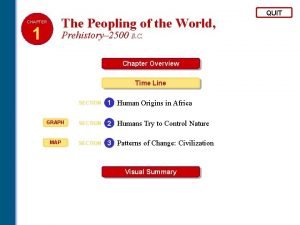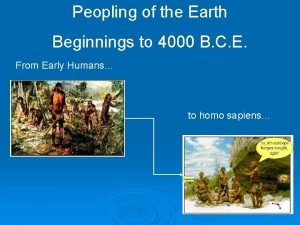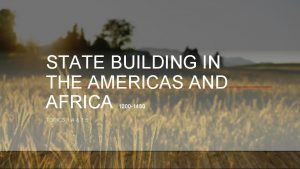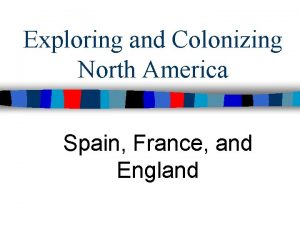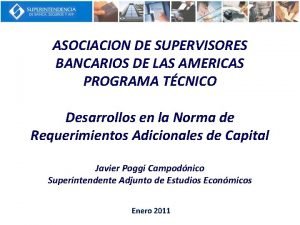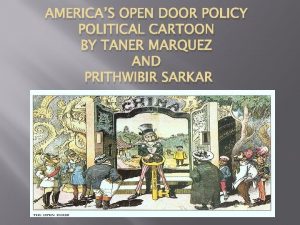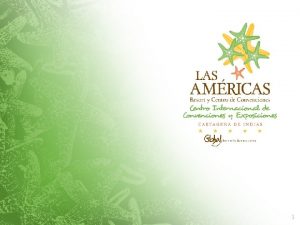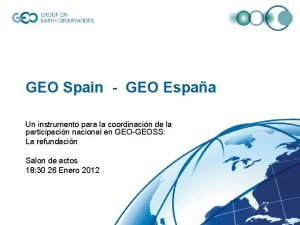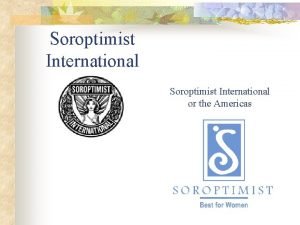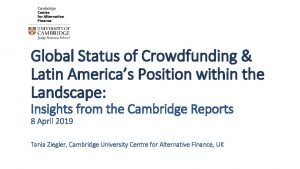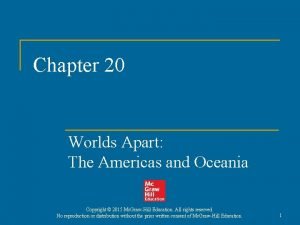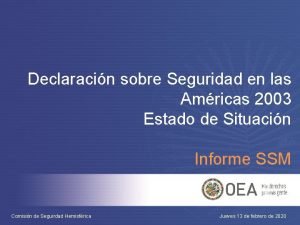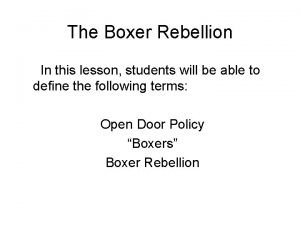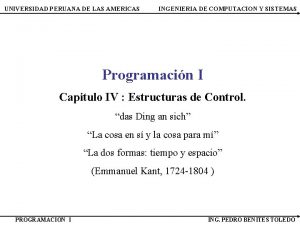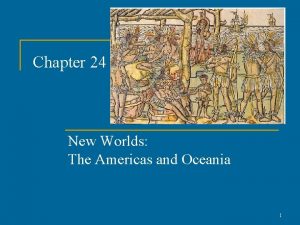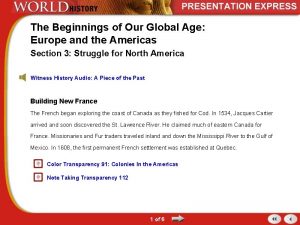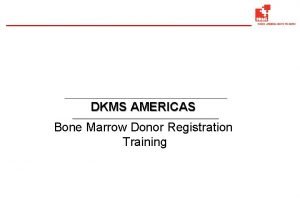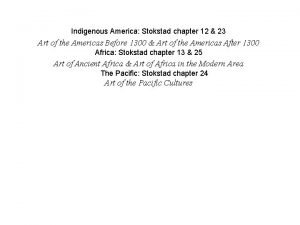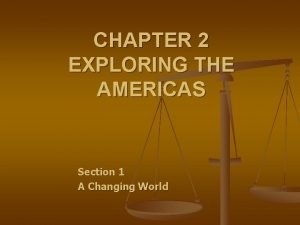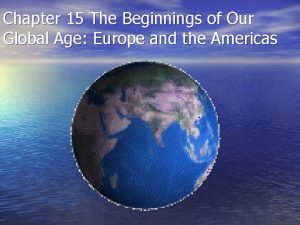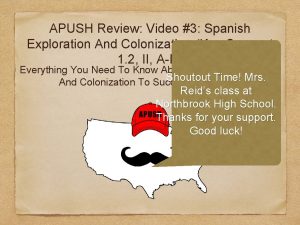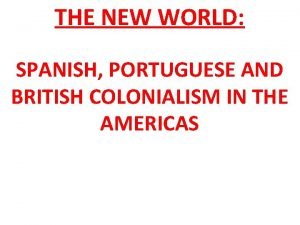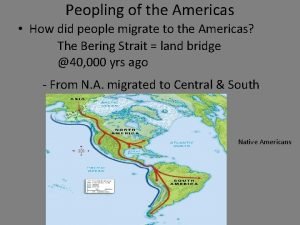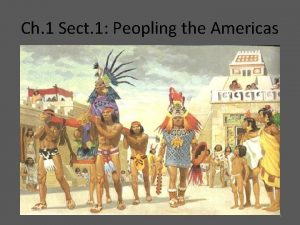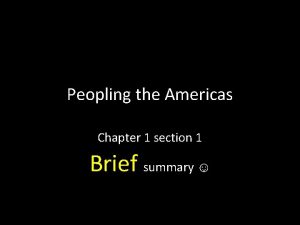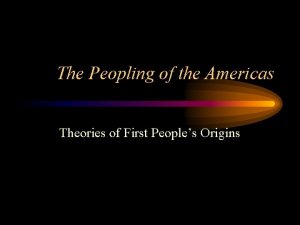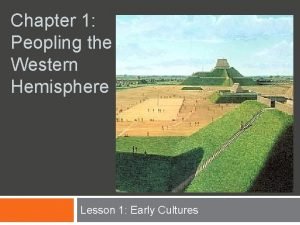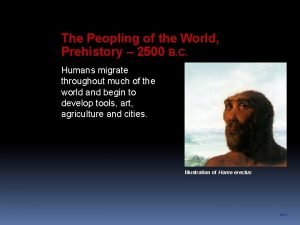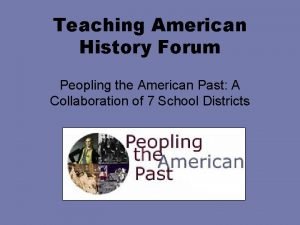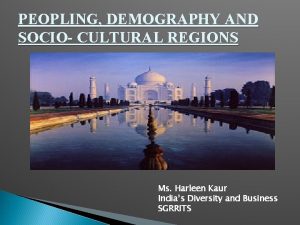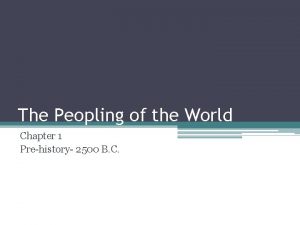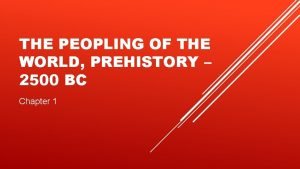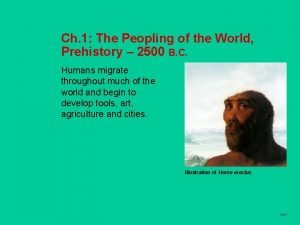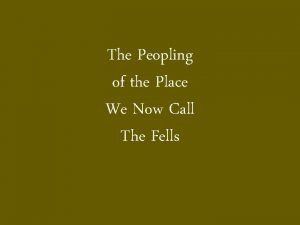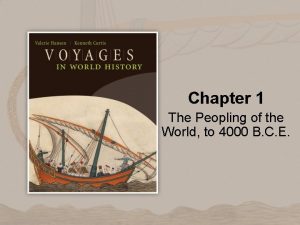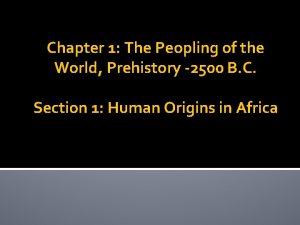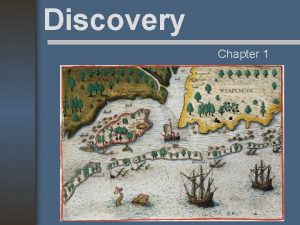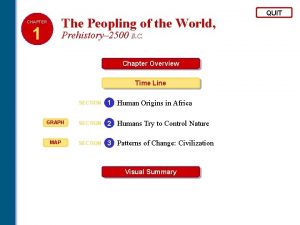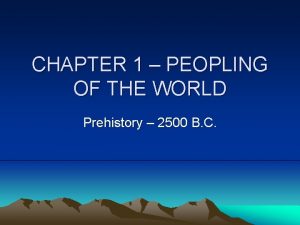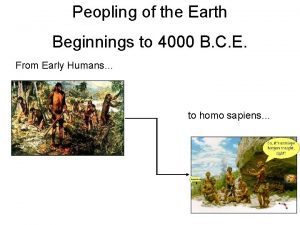6 The Americas The Peopling of the Americas

![The Peopling of the Americas Ô Ô The First Americans ] Migrated across the The Peopling of the Americas Ô Ô The First Americans ] Migrated across the](https://slidetodoc.com/presentation_image_h2/89cc32a10e6667fe79aa4f97a05b0f25/image-2.jpg)
![Early Civilizations in Central America (Mesoamerica) ] Olmecs (First millennium B. C. E. ); Early Civilizations in Central America (Mesoamerica) ] Olmecs (First millennium B. C. E. );](https://slidetodoc.com/presentation_image_h2/89cc32a10e6667fe79aa4f97a05b0f25/image-3.jpg)











![Politics and Society Ô Ô Ô Monarch’s power both divine and secular ] Chosen Politics and Society Ô Ô Ô Monarch’s power both divine and secular ] Chosen](https://slidetodoc.com/presentation_image_h2/89cc32a10e6667fe79aa4f97a05b0f25/image-15.jpg)






![The Inka Ô Ô Ô Ô Ô Pachakuti ] Campaign of conquest ] Boundaries The Inka Ô Ô Ô Ô Ô Pachakuti ] Campaign of conquest ] Boundaries](https://slidetodoc.com/presentation_image_h2/89cc32a10e6667fe79aa4f97a05b0f25/image-22.jpg)









- Slides: 31

6 The Americas
![The Peopling of the Americas Ô Ô The First Americans Migrated across the The Peopling of the Americas Ô Ô The First Americans ] Migrated across the](https://slidetodoc.com/presentation_image_h2/89cc32a10e6667fe79aa4f97a05b0f25/image-2.jpg)
The Peopling of the Americas Ô Ô The First Americans ] Migrated across the Bering Strait ] Living in the New World at least 15, 000 years ago ] Reached southern tip of South America by 10, 000 B. C. E. Nomadic ] First Americans were hunters and gatherers ] Agriculture dates back at least 8, 000 years -cultivation of beans and squash by 6, 000 B. C. E • Cultivation of maize (5, 000 B. C. E) will pave the way for the first civilizations
![Early Civilizations in Central America Mesoamerica Olmecs First millennium B C E Early Civilizations in Central America (Mesoamerica) ] Olmecs (First millennium B. C. E. );](https://slidetodoc.com/presentation_image_h2/89cc32a10e6667fe79aa4f97a05b0f25/image-3.jpg)
Early Civilizations in Central America (Mesoamerica) ] Olmecs (First millennium B. C. E. ); lived along the coast of Gulf of Mexico • Intensive agriculture-along muddy riverbanks (maize & beans) • Two Olmec sites were discovered in the 1930 s. (San Lorenzo and La Venta) • includes pyramid (La Venta), stone ornaments, tools • Had a wide-spread trading network • Artisans constructed massive stone heads, some 10 feet high • Hieroglyphics-still undeciphered writing system • Played ceremonial game on stone ball court


© 2004 Wadsworth, a division of Thomson Learning, Inc. Thomson Learning™ is a trademark used herein under license. Mesoamerican Civilizations

© 2004 Wadsworth, a division of Thomson Learning, Inc. Thomson Learning™ is a trademark used herein under license. Pre-Columbian sculpture, Vera Cruz style, 6 -9 C. E.

Teotihuacan: America’s First Metropolis Ô First major Mesoamerica city, c. 3000 B. C. E. to 800 C. E ] Location: north of present day Mexico City ] City dominated by the Pyramid of the Sun (sacrificed victims buried underneath) ] Extensive trading network (cocoa, rubber, feathers, & food) ] City dwellings of stucco (apartment compounds) ] Economic base was agriculture

The Mysterious Maya Ô Ô Ô Ô Location: The Yucatan Peninsula and highlands of modern Guatemala Slash and burn replaced by swamp agriculture Important City-states ] Tikal (100, 000 population) and Copán ; city-states not powerful enough to dominate entire region Monarchy-surrounded themselves with aristocrats (wealth depended on land) Majority of people (estimated 3 million) were farmers, lived on chinampa plots or terraced hills Religion ] Polytheistic (nature deites, good and evil deities, human-like qualities) ] Practiced human sacrifice City dominated by central pyramid Men hunted & fought, women were homemakers (noble-women higher status)

© 2004 Wadsworth, a division of Thomson Learning, Inc. Thomson Learning™ is a trademark used herein under license. Pyramid at Chichen-Itza

Mayan Hieroglyphics Ô Sophisticated writing system (both ideographic and phonetic) Ô Calendar dating back to 3114 B. C. E. Ô Mayan calendar required understanding of astronomical events and mathematics Ô Spanish destroyed many of the books Ô Kept records of astronomical events

Mystery of Mayan Decline Ô Ô Collapsed around the 8 th or 9 th century Possible reasons ] Over-cultivation, long drought ] Cities like Tikal and Palenque are abandoned Some urban centers survived and prospered: ] Uxmal and Chichen Itza New urban centers on Yucatan ] Migrations of the Toltecs under Kukulcan ] Some believe the migration under Kukulcan is linked to the story of Quetzalcoatl

© 2004 Wadsworth, a division of Thomson Learning, Inc. Thomson Learning™ is a trademark used herein under license. Mayan writing. Glyphs carved on wall at Palenque, Mexico

The Aztecs Ô Mexica moved into the Valley of Mexico after the fall of Teotihuacan Ô Legend says they came from Aztlán, which gives them their more familiar name, Aztec Ô Aztec patron deity: Huit-zilopochtli Ô Less sophisticated then their neighbors, but excellent warriors Ô Established their capital at Tenochtitlán on an island in Lake Texcoco Ô The new kingdom was a collection of semiautonomous states

© 2004 Wadsworth, a division of Thomson Learning, Inc. Thomson Learning™ is a trademark used herein under license. The Valley of Mexico under Aztec Rule
![Politics and Society Ô Ô Ô Monarchs power both divine and secular Chosen Politics and Society Ô Ô Ô Monarch’s power both divine and secular ] Chosen](https://slidetodoc.com/presentation_image_h2/89cc32a10e6667fe79aa4f97a05b0f25/image-15.jpg)
Politics and Society Ô Ô Ô Monarch’s power both divine and secular ] Chosen from the royal family ] Advised by a small council of lords Hereditary nobility ] Served in military, government bureaucracy, or priesthood Commoners ] Calpulli -- kinship group headed by an elected chief ] Own temples and schools ] Often members performed a particular function ] Farmland held in common Gender roles ] Male children trained for war ] Women did the work at home, raised children, and wove textiles ] Women not equal to men, but had more legal rights then women of Old World civilizations Classes not rigidly stratified

Land of the Feathered Serpent: Aztec Religion and Culture Ô Ô Had more than 100 deities ] Some were nature spirits: Tlaloc - the rain god ] Some were patron deities: Huitzilopochtli – the symbol of the people themselves ] The supreme deity: Ometeotl – remote ] Other deities had direct impact: Quetzalcoatl – represents the forces of creation, virtue, learning and culture Fatalistic religion Art and sculpture ] Religious significance ] Two massive pyramids in the center of Tenochtitlán to the gods Huitzilopochtli and Tlaloc ] Artisans worked in stone, gold, and silver Writing based on hieroglyphs

Destruction of Aztec Civilization Ô Hernán Cortés, 1519, invasion of Mexico Ô Moctezuma held captive Ô Cortés was aided by native groups hostile to the Aztecs, especially the Tlaxcallans Ô Defeat of the Aztecs ] Disease brought by the Europeans swept the population

© 2004 Wadsworth, a division of Thomson Learning, Inc. Thomson Learning™ is a trademark used herein under license. Early Peoples and Cultures of Central and Latin America

The First Civilizations in South America A. Chavin de Huantar, west side of Andes 1. At Caral, a city by 2500 B. C. E. , reaching its height during first millennium B. C. E. 2. Pyramids and underground canals, metallurgy (gold and copper), traded cotton B. Moche, early first millennium C. E. , northern Peru 1. Capital contained over ten thousand people a. Two massive adobe pyramids, 100 feet high 2. Civilization encompassed 2, 500 square miles, with much warfare

First civilizations in South America 3. Environmental Problems a. Very arid, thus a sophisticated irrigation system b. Moche civilization collapsed in 700 s C. E. 1) Possibly due to floods and droughts associated with El Nino C. Kingdom of Chimor, capital at Chan, at mouth of Moche River, c. 1100 s 1. Similar to Moche civilization D. Early as 2000 B. C. E. trade taking place 2000 miles along Pacific Coast by balsa boats 1. Transportation by land more difficult as no large draft animals in the Americas except less hardy llama

© 2004 Wadsworth, a division of Thomson Learning, Inc. Thomson Learning™ is a trademark used herein under license. The Inka Empire about 1500 C. E.
![The Inka Ô Ô Ô Ô Ô Pachakuti Campaign of conquest Boundaries The Inka Ô Ô Ô Ô Ô Pachakuti ] Campaign of conquest ] Boundaries](https://slidetodoc.com/presentation_image_h2/89cc32a10e6667fe79aa4f97a05b0f25/image-22.jpg)
The Inka Ô Ô Ô Ô Ô Pachakuti ] Campaign of conquest ] Boundaries extended under Topa Inka and Huayna Inka to Ecuador, central Chile, and the edge of the Amazon basin The Four Quarters: Inka Politics and Society ] Empire called Tahuantinsuyu: “The world of four quarters”. The Four Quarters: Inka Politics and Society By late fourteenth century, the Inka were a small community in area of Cuzco b. Pachakuti (1440 s) launched campaign of conquest 1) Under Topa Inka (Inka meaning “ruler”), and Huayna Inka, the kingdom extended from Ecuador to central Chile to edge of Amazon basis Inka Culture ] Built on war with an army of 200, 000 men ] Quipu, knotted strings for record keeping (no written language aside from this) Conquest of the Inka

The Inka 1. The Four Quarters: Inka Politics and Society (Tahuantinsuyu) a. By late fourteenth century, the Inka were a small community in area of Cuzco b. Pachakuti (1440 s) launched campaign of conquest 1) Under Topa Inka (Inka meaning “ruler”), and Huayna Inka, the kingdom extended from Ecuador to central Chile to edge of Amazon basis c. Centralized state, divided into the “world of the four quarters” and provinces containing about 10, 000 inhabitants d. Forced labor the norm, to open virgin lands, construct roads and buildings 1) Cuzco become a city of great stone buildings

e. 24, 800 miles of highways and roads, with rest houses and suspension bridges 1) Runners carry messages up to 140 miles per day f. Terraced agriculture, watered by irrigation systems 2. Inka Culture Ô Empire built on war, army of 200, 000 raised through universal conscription b. Conquered peoples instructed in the Quechua language c. No writing, but used numerical system of knotted strings called quipu 3. The Conquest of the Inka by Francisco Pizarro by 1532 Ô Steel weapons, horses, gunpowder, diseases, and factionalism among Inka

© 2004 Wadsworth, a division of Thomson Learning, Inc. Thomson Learning™ is a trademark used herein under license. Pot with Playful Image Sixth to ninth centuries, Peru

© 2004 Wadsworth, a division of Thomson Learning, Inc. Thomson Learning™ is a trademark used herein under license. Early South American Ceramics Example of early South American ceramics. Sixth to ninth centuries, Peru.

Stateless Societies in the New World Ô Eastern Woodlands Ô Development of agriculture in the 3 rd millennium B. C. E. (plants first, then begin later maize, squash, beans) Ô Ô Ô Mississippi River valley • Hopewell culture (centered in Ohio but widespread); villages become cities of 10, 000 or more Cahokia (near East Saint Louis, Illinois) 1. Burial mound 98 feet high with base larger than Great Pyramid in Egypt 2. Town covered 300 acres, population of over 20, 000 3. Probable contact with Mesoamerica (e. g. , ball courts) 4. Decline in 1200 s

Stateless Societies in the New World The “Ancient Ones”: the Anasazi in the American southwest 1. Irrigation by 800 s and an urban center at Chaco Canyon in New Mexico 2. Moved north to Mesa Verde in 1200 s, but decline in 1300 s 3. Decline possibly due to climactic changes and increased warfare 4. Descendants are today’s Zuni and Hopi

Stateless Societies in the New World South America: The Awawak 1. Along Venezuela’s Orinoco River into islands of the Caribbean Sea 2. Some urban center, evidence of human sacrifice, ball courts • In modern Venezuela • Some occupied islands in the Caribbean Sea

© 2004 Wadsworth, a division of Thomson Learning, Inc. Thomson Learning™ is a trademark used herein under license. Peoples and Cultures of North America

Discussion Questions Ô Ô What characteristics did early Mesoamerican civilizations have in common? Compare and contrast the Aztec and Inka empires. How did each empire dominate and control their subjects? What were the characteristics of the “mound builders” in the Eastern areas of North America? What were the characteristics of the native peoples of the Southwestern areas of North America?
 The peopling of the world chapter 1
The peopling of the world chapter 1 Peopling of the earth
Peopling of the earth Man in the ice
Man in the ice Carpa nan
Carpa nan Chapter 24 the americas and oceania
Chapter 24 the americas and oceania When did britain colonize america
When did britain colonize america Itf internet
Itf internet Asociación de supervisores bancarios de las américas
Asociación de supervisores bancarios de las américas Chapter 16 people and empires in the americas
Chapter 16 people and empires in the americas Open door policy cartoons
Open door policy cartoons Abl americas
Abl americas Centro internacional de convenciones
Centro internacional de convenciones Geo
Geo Chris penwell
Chris penwell Soroptimist international of the americas
Soroptimist international of the americas Risk minds
Risk minds Americas global position
Americas global position Ap world history chapter 20 the americas and oceania
Ap world history chapter 20 the americas and oceania Declaración sobre seguridad en las américas 2003
Declaración sobre seguridad en las américas 2003 Hteamericas
Hteamericas Define boxer rebellion
Define boxer rebellion Universidad peruana de las americas
Universidad peruana de las americas Chapter 24 new worlds the americas and oceania
Chapter 24 new worlds the americas and oceania The beginnings of our global age europe and the americas
The beginnings of our global age europe and the americas Blood donation form
Blood donation form Art of the americas before 1300
Art of the americas before 1300 Dkms zmiana danych
Dkms zmiana danych Rochem
Rochem Chapter 2 exploring the americas study guide
Chapter 2 exploring the americas study guide The beginnings of our global age europe and the americas
The beginnings of our global age europe and the americas Spanish caste system
Spanish caste system Spanish caste system in the americas
Spanish caste system in the americas
